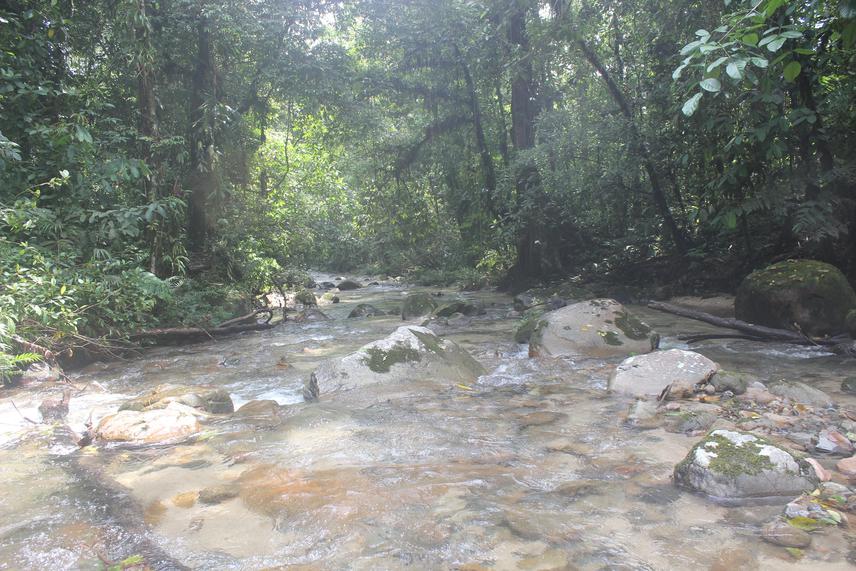Gabriel Massaine Moulatlet
Ferns and lycophytes (hereafter pteridophytes) constitute an important group in tropical forests. In this project we aim to document the diversity of pteridophytes along environmental gradients, from the páramo ecosystem to the Amazonian lowlands, in a network of recently installed permanent plots by the Ecuadorian National Biodiversity System (SINMBio). Our sampling will fill the gap on species information in the Eastern Andean-Amazonian region and generate information that is useful for conservation programs, for management plans of protected areas and to construct the big picture on
pteridophyte distribution across the Amazon basin.

Colonso River, at the entrance of the Colonso-Chalupas Reserve
One of the most biodiverse areas in the world is the region formed by a continuous corridor of forests that connects the mountain region to the lowland Amazonia in Ecuador. To understand the mechanisms that drive species high biodiversity along this corridor, its urgent to know what the species are found in the area and how the ecological information can be used to protect it. Out of the groups which could be selected to study species diversity, pteridophytes are an important on. This is a diverse group of tropical forests, with > 3000 species described for the Andean-Amazonian area. They have been reported as indicators of species turnover as they are highly related to environmental conditions, such as soils and climate. In this context, the compositional change of pteridophytes community may indicate compositional change in unrelated taxa, like trees, palms or even birds.
Moreover, in comparison with other plant groups, pteridophytess are easy to collect and to identify with available online keys. This work originates from the need of collect information on world data gaps. Pteridophytes, given its usefulness to assess vegetation patterns and other environmental characteristics, can then be used as a group indicator of general species distribution patterns.